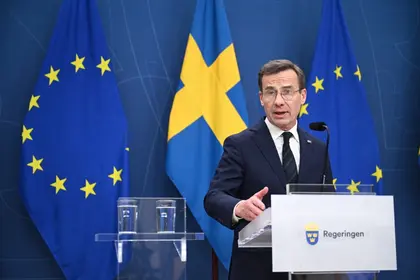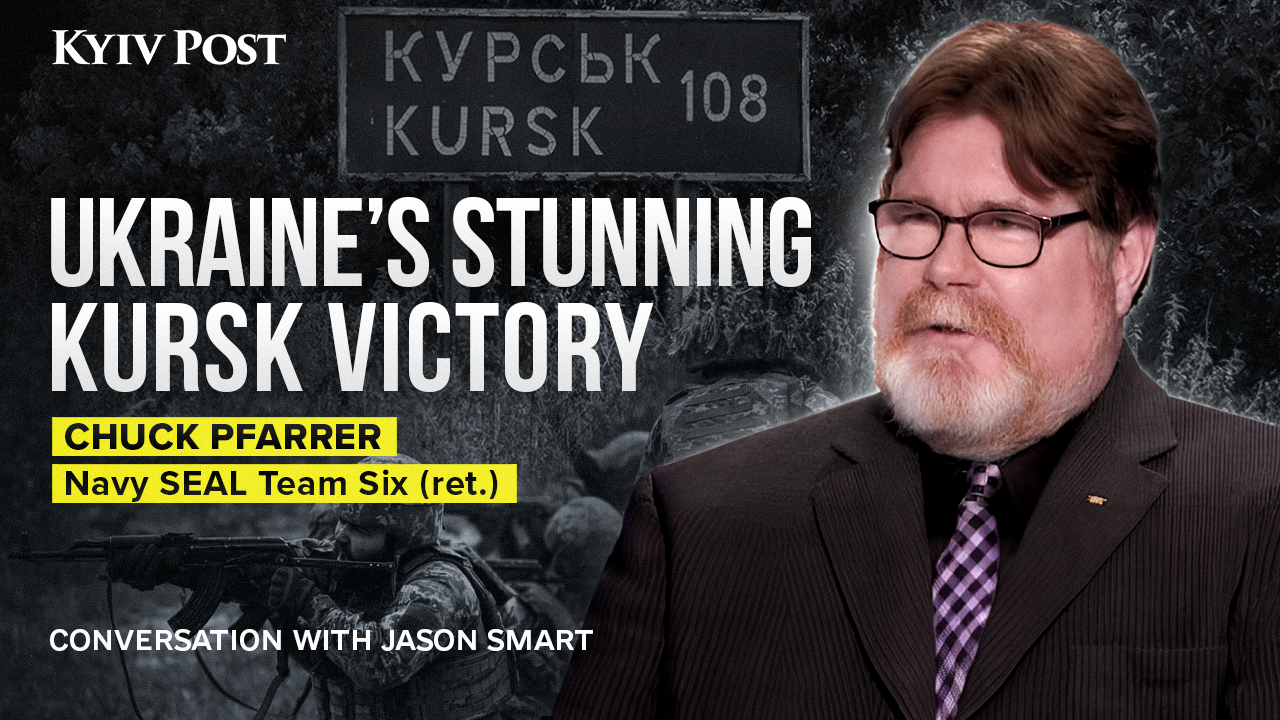Speakers at Thursday’s Kyiv International Economic Forum (KIEF) all seemed to conclude that Ukraine might have the means to produce the weapons it needs, but not the budget to pay for them.
Ukraine’s arms production capacity is at Hr. 1.3 trillion ($31 billion), an amount the state budget cannot currently meet, Herman Smetanin, Ukraine’s Minister of Strategic Industry said during a panel discussion.
JOIN US ON TELEGRAM
Follow our coverage of the war on the @Kyivpost_official.
For reference, Ukraine’s total defense budget for 2024 is Hr.3.73 trillion ($90 billion), which encompasses wages and arms procurements among other expenses.
At one of KIEF’s panel discussions, representatives from Ukraine’s mil-tech scene agreed that government support might be insufficient to meet its military needs – a notion that echoed a recent Financial Times (FT) report about Ukraine’s wartime drone industry.
Challenges facing Ukraine’s mil-tech capability
During the panel discussion, Kateryna Mykhalko, Director-General of Tech Force in UA, a drone coalition and advocacy group, said Ukraine’s mil-tech industry has great potential but “regulatory constraints” – including export restrictions – remain an issue.
“One of [the regulatory issues] is, in fact, the lack of sufficient funds to cover all production capacities, at the same time the international market is closed and, as a result, a lack of weapon exports to other countries, as well as the lack of market conditions for procurement,” Mykhalko said, adding that 85% of drone manufacturers had or planned to relocate abroad.

Kremlin Declines to Comment on North Korean POWs in Ukraine
Lyuba Shipovich, Founder of Dignitas Fund, a disaster relief NGO that also helped supply drones to the troops, said production far from the front also translates to adequate products to cope with frontline needs.
“[...] because now we have a constant race of technology. We introduced a solution in two days. The enemy may find opposition to this decision … Here we are flying from Bukovel, it works from Bukovel, but it may not work at the front. This is a completely different situation,” Shipovich said.
Nataliia Kushnerska, COO of Brave1, a Ukrainian mil-tech seed fund that supports the country’s mil-tech startups, agreed that fast-paced frontline developments – including technological advancements – necessitate a short time to deployment for any new systems before they become obsolete.
“A contract today with a supply in two years will no longer be effective on the battlefield,” Kushnerska said.
Earlier in the discussion, Kushnerska also noted the progress of Ukrainian mil-tech developments. For example, projects that take five years to complete internationally only take half a year or so to be ready for deployment on the front in Ukraine, she said.
Private funding
The speakers agreed that private funding – especially from abroad – could help Ukraine scale up operations and cover the expenses needed to produce the weapons, but it’s not without issues.
Mykhalko said a lack of budget could be resolved by allowing manufacturers to export drones abroad to Kyiv’s allies. The profits could then potentially help subsidize and lower the cost of production, providing Ukraine with more drones that it needs.
She added that deregulating Ukraine’s arms industry, which is now strictly controlled, can also attract more foreign arms conglomerates to scale up their operations in Ukraine.
That said, Mykhalko noted a positive development in this direction thanks to the Ministry of Digital Transformation and said there are ongoing dialogues with the government about deregulation.
The panel moderator also asked Marcel “Otto” Yon, a German investor who has invested in 12 Ukrainian companies, about the investment climate in Ukraine, where Yon said foreign venture capitals (VCs) often have a misaligned perception while looking at mil-tech.
Yon said there are three main issues – investors are spoiled by the fintech world and look at the wrong metrics; they are concerned by what would happen when the war ends; and they lack focus on hardware and instead focus too much on software, whereas mil-tech is a hardware-oriented industry.
Yon later said he has not seen major VCs entering the Ukrainian mil-tech industry yet and likens the scene to a “gold rush,” where most VCs engaged in Ukraine are “pioneers.”
That said, he said not all companies – especially mil-tech startups – should look up to VCs should the later try to implement a fintech mentality to their developments. He also said Europe needs more actual mil-tech startups as opposed to those marketing themselves as dual-use due to the subject sensitivity in Europe.
You can also highlight the text and press Ctrl + Enter






